Renovations Past, Renovations Last
25 years ago, the North Penn community was divided over the future of North Penn High School. Now, a quarter century later, in a similarly tense political climate, NPSD is about to find itself at a familiar crossroads.
That’s the way the wall crumbles: The façade of North Penn High School’s Kpod, now 25 years since its construction, is showing signs of decay as the NPSD eyes a major renovation to NPHS.
Just over twenty-five years ago, Superintendent Dr. Edward Bowes, along with other district officials and administrators, standing on what would be a construction site, thrust shovels into the soil. That was December 19, 1997; the ceremony marked the groundbreaking of K-pod, a three-story addition to North Penn High School, but hidden beneath the soil lies a trove of history. As plans to build an additional 9th-grade center are in discussion, the time is now, more than ever, to turn back the clock to a period of time when the decision to build K-pod instead of a second high school was dominating headlines, and how looking at history can help determine the best path moving forward.
PART 1: THE DIVISION AND DEBATE OF 25 YEARS AGO
In the mid-1990s, the North Penn community was at a crossroads. Two organizations were going head to head in the community over the growth of the North Penn School District. Discussions of plans for a second high school were circulating. Citizens of Montgomery Township were concerned for the future of the community, and the school board was caught in the crossfire as elections were on the way.
With approximately 2,600 students and more on the way, North Penn High School was facing tremendous growth in the student population, and finding a solution was necessary to control it.
Plans to build a second high school were suggested by the Administrative Committee on Facility Expansion. The North Penn School District owned property on Kenas Road (now Windlestrae Park) in Montgomery Township, where they could build North Penn High School East should the idea come to fruition, but the school board shot down the idea, igniting conflict within the community. Two organizations, The Educational Alternative for Montgomery, and the North Penn Taxpayers’ Association, were at opposite ends of the conversation; while TEAM, including parents and other community members, petitioned for a second facility, the Taxpayers’ Association was strictly against the proposal. Taxpayers, especially seniors in the area, had witnessed a rise in local school taxation, fearing it was eating away at their retirement funds and Social Security. Many did not have children who still attended school, so they thought it was unfair to be paying for a school that doesn’t affect them.
At the center of this debate was North Penn School Board member Donna Mengel, who felt strongly about the costs of this potential project.
“The costs that were not being focused on weren’t just the bricks and mortar, but also what it would cost to split up all of our resources. We’d need another football stadium, we would need more teachers, we’d need more buses. There are so many other expenses that would be added into the second high school. Plus, there was a talk of parity. Was this going to be a smaller high school or were we going to have two high schools the same size to keep all things equal?” Mengel explained. “There was a movement towards the building of a smaller second high school, but that looked elitist… there would be six other municipalities paying into that. That wasn’t fair. There was no parity there… It was cost prohibitive to build two equal high schools or the high school that would match the one that exists today.”
There was a movement towards the building of a smaller second high school, but that looked elitist… there would be six other municipalities paying into that. That wasn’t fair. There was no parity there
— Mrs. Donna Mengel - Former North Penn School Board President and VP
Mengel had quickly become the face of the debate, putting her directly in the center of the heat towards the board. Several people called for her resignation, but Mengel remained unruffled and put-together as she continued her election campaign.
On the opposing side, TEAM was so adamant about the need for a second high school that they managed to collect about 7,500 signatures, more than half of the township’s adult population at the time, to secede from the district and join Hatboro Horsham.
As tensions rose, conversation rose as well.
The school board was at the center of all of the debate and discussion, which only got louder as elections were approaching. A conversation about the betterment of student education had turned political.
A majority of the school board at the time were conservative Republicans; this imbalance in party representation stirred political debate, polarizing the community.
Coincidentally, as elections approached, a documentary team had set up shop in the district with the intent to film a documentary about a school district in sprawling suburbia. Having knowledge of North Penn’s marvelous reputation, Gini Reticker brought in a camera crew to film the high school experience in such a populated area. But, they’d come at an interesting time when a second high school was proposed and elections were underway; this changed the entire premise of the project as they followed the ongoing drama within the district, ultimately creating New School Order.
The documentary provided perspectives from all sides of the debate, including students who attended the high school; many believed the school was too crowded to house as many students as there were, not to mention the coming rise in population.
“I think we need another high school ‘cause this school is too crowded. There are too many people. You just can’t do anything anymore. You don’t get the attention you deserve from teachers anymore because they have too many students. It’s nuts,” expressed one student in New School Order.
Everyone in the community had seemingly gotten involved in the conversation in some capacity, whether a casual listener or with an opinion to the left or right movements. Dr. Juan Baughn, the former Principal of North Penn High School, felt that politics had completely blocked out the wellness of those who should’ve been the focus of these discussions: the students.
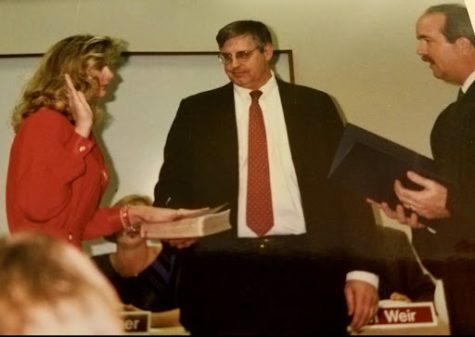
“When everything is so large, I think you lose some of yourself… I wanted everyone in that building to feel that they were special… We worked hard at making people feel special. We added clubs… there was this Dungeons & Dragons thing. Jeez, I got called to the carpet because I started the Dungeons and Dragons club. That’s mild by today’s standards, I guess, but I believe so much in the social-emotional welfare of people… My feeling was that when you get this big, the social-emotional welfare of the students and the staff is at terrible risk because… you become a number rather than who you are,” Baughn explained.
“One time, [along with longtime SGA adviser Jim Finnemeyer] we said, how do we make this philosophy of ours come to life? So, we decided that we put every student in this building— at that time there was probably 2,400 students—we put every student’s name on a plaque and post it somewhere around the walls in the high school, and everybody was supposed to find their name and locations to where they were in this high school… It was important to me that the least of us become the most of us. And I just felt that so much space and so much stuff could get in the way of that,” Baughn said.
On the other side of the issue, Mengel’s votes skewed older as she voiced her support for taxpayers and opposed a second high school. While a vocal community opposed the outcome, she had simply won a majority vote. She was successfully elected the Vice President of the board.
“We were conservative Republican candidates and also endorsed taxpayer candidates… It was a tumultuous election, with accusations all around and quite a number of candidates that had run. It was a contested primary, and, of course, two slates against each other in the general election, but our slate won handily… on our number one platform being not to build the second high school and that we could have in addition to the current high school, and that we manage the resources that we already have,” Mengel said.
The decision was made. In place of building North Penn High School East, an expansion would be added to the already existing high school.
Mr. Robert Gillmer, who is currently the Coordinator of Communications Media for the North Penn School District, was in the trenches of the heated school board meetings as they had begun televising them for the public. Gillmer was given the opportunity to see firsthand the effect the discussions were having on the community, from education to resignations.
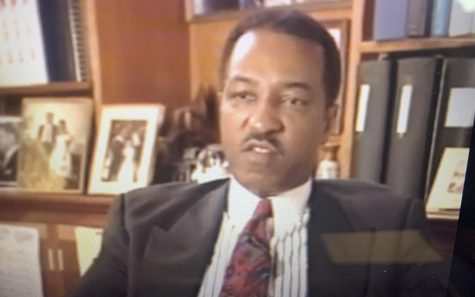
“Well, that was really the first big community debate that I got to see take place. There were a lot of people very passionate about a second high school, that we had to have it… There were a lot of people that resigned. There were principals who resigned. There were administrators who resigned, and people saying, ‘alright, I’m out because I think we’re doing the wrong thing…’ We did lose a lot of people, whether or not it was directly related to the second high school… We had 37 administrators leave in that time frame, so it was a big time of upheaval, from a standpoint of change,” Gillmer said.
Baughn, the principal of North Penn High School at the time, was popular among the students and in the community. He firmly believed that a second high school was needed, so when plans for the expansion were shut down, Baughn, along with others, left their positions in the district in 1996, disagreeing with the direction the district was headed, saying they were “going to lose youngsters.”
“I felt at the time that I was one of the few people who were actually fighting on behalf of the students… Some of the folks making decisions were not looking at the big picture and I just felt so strongly… that there’s no way you don’t build the second school. This community was going to grow. It was [becoming] more diverse, and I just felt that the opportunities would be lessened for some of the same people that we were trying to help the most,” Baughn said. “In addition to being principal here, I was Director of Secondary Education, so I had some input until I began to rail against what a number of the board members wanted to do and I wasn’t the only one… I made a stance that when the building gets more than 2,600 students, I have to go… I just didn’t feel that I wanted to be a manager; I wanted to be a principal,” Baughn explained.
“He single-handedly kept the ship afloat at the high school, and he kept the kids’ attention on education… I had a lot of admiration for him,” expressed former The Reporter journalist Dick Shearer, who covered much of the debacle in the mid-‘90s, “But they lost him.”
I made a stance that when the building gets more than 2,600 students, I have to go… I just didn’t feel that I wanted to be a manager; I wanted to be a principal
— Dr. Juan R. Baughn - Former NPHS Principal
Fred Schmidt, North Penn’s personnel director, was also among those who resigned. He worked for North Penn for 22 years.
The expansion plans moved forward. Discussions had finally led to a momentous groundbreaking on North Penn High School grounds.
The groundbreaking ceremony took place on December 19, 1997, and was broadcast by NPTV and hosted by Kyle Berger, who, since then has gone on to become the current Director of Student Activities and the Broadcasting and Video Production teacher at North Penn.
“An interesting note on today’s ceremony: The shovel being used in this ceremony is the same shovel used to break ground for the original high school expansion… on July 2, 1969,” Berger stated back in 1997 during the ceremony.
The expansion added an additional 90,000 sq. ft. and included the K-pod wing with 23 new classrooms, 6 science labs, two computer labs, planning and student project rooms, along with new administrative facilities, a new health suite, and an Audion in a brand new entrance.
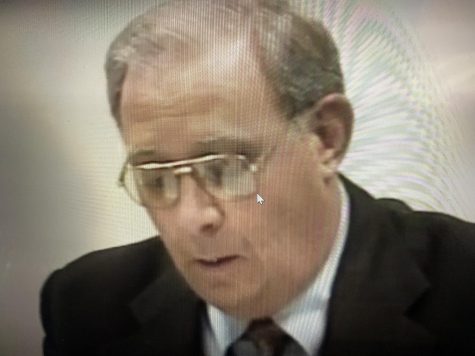
In addition, a new section of the cafeteria was added, which also included a new faculty dining area, a dish room, two portable serving areas, and a school store.
The Cafeteria construction was completed in 1998, and the K-pod expansion was completed in 1999.
It was projected to accommodate an additional 700 students. Before the renovation, the high school had 2500 students; once construction was completed in August 1999, the population had already grown to 2700 students. The student population of North Penn High School is now about 3,500.
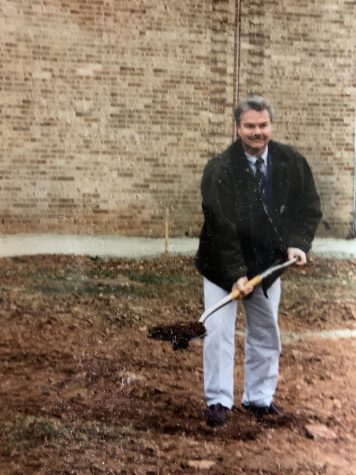
Many still dispute the decision to expand the building. Many see the renovation as a successful addition to the community, while others are still upset that North Penn High School East never saw the light of day.
“We did not want to see ‘a great divorce’ in our school district, a distribution of assets to two sides of the community. So this kept everybody together. The complaint at that time was at the school district was too large, but many, many, many people who were complaining about how large the school district was were the same people trying to get their kids into Penn State and other large campus colleges… If you want a smaller pond for your child to swim in, you pay for it. Put them in a private school. Put them in a smaller parochial school. Find your child a smaller environment. Don’t expect all the taxpayers to pay for a tailor-made fit for your child; you purchase it. So, that was a conservative strident approach that we had towards tax dollars,” Mengel said.
“I still think it’s too big to manage. I think there are ways that North Penn has made it small in terms of management but I saw it as a monster… They said it would cost more money. I disagreed with that… The other was that they didn’t want to divide the community. They didn’t want the… Montgomery Township [people] and the Lansdale people. So they used that as an argument that ‘we’ve worked hard to bring this community together with all of those townships and entities and we don’t want to separate them.’ And when I pointed to Central Bucks West and East and South, and West Chester East and North; that wasn’t North Penn… I felt that that was a poor excuse because money wasn’t significantly different from what they had to do here, and certainly what they’re talking about doing now,” Baughn said, referring to the possible 9th-grade addition.
The mid-90s were a time of great upheaval and uncertainty, a time of great polarization and community engagement.
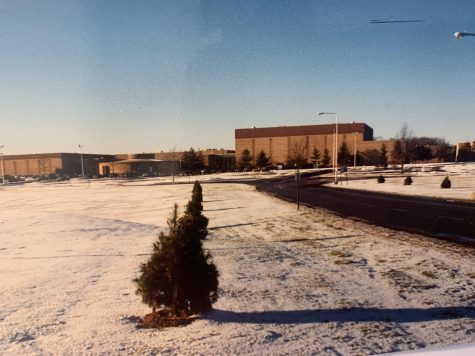
As discussions for a 9th-grade center renovation progress, history already begins to repeat itself. Now, with the knowledge of what occurred in a time past, the threat of yet another looming debate within the community arises.
PART 2: CURRENT NINTH-GRADE CENTER AND RENOVATION DISCUSSIONS
In addition to the 9th-grade center, the board also plans to begin a full renovation of the current building. The idea was proposed in 2019 before the Covid-19 pandemic delayed further planning.
“In 2019, we held community forums to discuss the potential of renovating this building…. Part of that discussion was, ‘you know what, if you’re going to spend that kind of money on a building that is 550,000 square feet, is now the time to bring 9th graders here to this campus?’ Over 95% of the high schools across the country and 100% of the high schools in Montgomery County, aside from us, have 9th-graders on their high school campus, and there’s many reasons for that. First of all, academics. Next, athletics, clubs, activities, and socialization,” North Penn Superintendent Dr. Todd Bauer said.
The idea behind the project is to bring ninth-graders up to the high school level to gain full educational access to the wide range of programs and opportunities.
We really wanted to promote the trades as a career opportunity and I think to do that properly, it would be to have the 9th graders up here and have full access to the whole range of courses available… Also, to have access to the AP courses that are offered up here at the high school and dual enrollment, they would have much more opportunity up here than they would currently at the middle schools. That’s just from a pedagogical viewpoint
— Mrs. Tina Stoll, President - North Penn School Board
“The middle school schedules do not align properly with the tech school schedules… If the 9th graders were up here, they could start earlier with the process of attending the tech school… We really wanted to promote the trades as a career opportunity and I think to do that properly, it would be to have the 9th graders up here and have full access to the whole range of courses available… Also, to have access to the AP courses that are offered up here at the high school and dual enrollment, they would have much more opportunity up here than they would currently at the middle schools. That’s just from a pedagogical viewpoint,” current school board President Mrs. Tina Stoll explained.
EXISTING BUILDING RENOVATION
It goes without saying, though, that a renovation is overdue; the bowels of North Penn High School have been faltering more than ever, with multiple system failures in this school year alone…
Before the 2022-23 winter break, an HVAC system failure forced students and staff to stand out in the cold before the 7:21 bell. Over the winter break, a pipe burst in the ceiling above the auditorium entrance, leaving a mess across the auditorium lobby. With dated systems comes additional costs to repair, so updating those systems would alleviate that.
This information was included in an informational video created by Mr. Gillmer about the history of the high school; this video was first played at the school board’s worksession meeting on February 7.
“I think that lays a pretty good groundwork as to why we need to have the renovation, not why we would like to conduct a renovation here at the high school… to make sure that the building can stay up and running for the students,” Mr. Pete Nicholson, former principal and now the Administrator of Secondary Education and Renovation, said.
Many administrators and staff members have seen the dated systems behind North Penn’s walls and feel that a renovation is the solution to prevent unnecessary costs.
“There’s just a lot of stuff that people don’t see every day. It’s in the ceilings, the walls, the electricity, the plumbing…, the heating and air conditioning systems that are 50 years old, that are built on 1960s technology that just don’t work anymore or are corroded or rotted and failing. And while you walk down the halls, cinderblock walls are still there. The stuff that’s inside the walls, it’s not exciting or innovative or anything like that. But there are systems we need to stay warm and cool. It’s an expensive venture to update it, fix it, and put it in place,” Gillmer said.
There’s just a lot of stuff that people don’t see every day. It’s in the ceilings, the walls, the electricity, the plumbing…, the heating and air conditioning systems that are 50 years old, that are built on 1960s technology that just don’t work anymore or are corroded or rotted and failing.
— Mr. Bob GIllmer - NPSD Coordinator of Communications Media
Nicholson, who is spearheading the project with Bauer, also informed the public about the dangers and expenses of system failures in the building.
“If you look at the capital projects plan with Mr. [Tom] Schneider, [who] reports on facilities and operations committee (FNO) every month, there are over… $114 million in needs to North Penn High School that are currently in that capital projects plan. Of those $144 million, $77 million are at a level three or higher… if a shutdown should happen, we would need to potentially close school for a day, for a couple days, for a week, who knows… that’s 77 million dollars worth of fixes that could potentially close North Penn High School. An additional $20 million is currently at a 2.5 to 3, so there are some very high-value needs of the building being just over 50 years old,” Nicholson explained.
As members of the board began to think of the prospect of a renovation, research began to take place, which included taking tours of other schools to acquire ideas.
“We went to Falls Church Virginia, State College multiple times, Central York High School, Upper Merion High School, Springfield Delco; I’m sure I’m missing one or two, but that’s five high schools right off the bat there,” Bauer recalled.
A group of staff, students, and community members also had the opportunity to tour Upper Merion High School on April 3 in a trip called Bus to NPHS’ Re-Imagined Future. The group viewed modern construction techniques in a public high school like their own to get an idea of the vision for North Penn if a renovation happens. The students were especially impressed with how much of a difference open spaces can make in children’s education, comparing and contrasting it with their own North Penn High School.
“Got a little jealous, I can definitely say that,” NPHS senior Reesa Frost joked. “It really reminded me of a small college campus, you know, because, obviously, I’m a senior; I’ve taken those college tours. You walk right in and there’s all these places to just sit down, do work, and I think that’s something that every school needs… In K-pod, obviously, it’s the newest addition, and there are just those huge windows, and… it just opens up the room. It makes it more comforting…rather than the tiny little prison windows that I can barely look out of, that just make it seem like I’m so much more boxed in than I actually am.”
“Being able to move around and collaborate in spaces outside of the four squares that we’re in now, I think it would help so much with people grasping what they’re learning…You can’t put a fresh coat of paint over 1970s architecture and expect it to be modern,” senior Audrey Keller said.
“I think going to [Upper Merion] really put into perspective how much North Penn is lacking. And, obviously, a lot of students here are very grateful for the opportunities we have, but when it comes to basic things like heating and cooling and, again, like the leaky windows, and how isolated we all are in our classrooms, I think that the improvements need to go beyond just… our basic needs,” junior Carina Laventure said.
As the board and administration have toured multiple schools, Bauer compared them with North Penn as he sees what works and what doesn’t.
“When you look at these high schools, there are collaborative spaces. There are engineering labs. They are more wide open like a college campus. They encourage critical thinking, collaboration, teamwork, as opposed to this high school. When you walk through the hallways– while it is very well kept for a 50-year-old building– it looks like it was built in the 70s: very small classrooms, very small windows, not a lot of natural light, not very much innovation space,” Bauer reflected.
The vision is to create a campus that is open and interactive and to have flexible learning spaces that can have multiple uses. For example, the concourse may include tables and chairs in place of the current benches that reside there for student interaction and study. The commons area, also the cafeteria, is also envisioned in the early discussions to promote an idea called “Lunch and Learn.” Facilities will be upgraded to fit a “21st-century education” space, including updated Arts and Music spaces, and fitness and athletic spaces.
The goal is also to create a sense of pride at the high school with a campus and an environment the community can be proud of.
“I know that this community cares greatly about North Penn High School, and this community wants to know that our students have the best opportunities to help them be successful beyond their time in the school district. There’s a lot of pride in North Penn, which I’ve grown to really appreciate,” Bauer expressed.
A potential redesign of NPHS, while certainly needed for aesthetics and systems, according to Bauer, is also important for the academic functionality of the building.
“If you want to do a large project in the hallway for physics class or chemistry, we don’t have that kind of space here at North Penn High School. It’s a big building, but there aren’t wide open spaces,” Bauer said. “[At] one of the schools we went to visit, as soon as you walked in, you saw kids seated on couches, kids in a coffee shop, There aren’t even seating spaces here in North Penn High School… It’s just not the environment that you expect in 2023 for high school kids, especially in North Penn. We’re used to being at the forefront of things and being the innovators– we do in many regards– but I think our building is not one of them. Our facility staff does a great job. They keep it clean and they do the best that they can with what they have. That said, it is desperately time for renovation here.”
PART 3: OPTIONS LOOKING AHEAD FOR THE NEXT 25+ YEARS
If this renovation comes to fruition, there will be two options to move forward with.
The first option would include a fully “reimagined, collaborative, and flexible learning space,” which would include all new systems, the 9th-grade addition, an updated commons area, and a transformation of current learning spaces to reflect a 21st-century look and education; this option would cost an estimated $400,801,853.
The second option would not change the layout of the current building or add a 9th-grade addition, but would still replace old systems with new HVAC, electrical, plumbing, and lighting; this option would cost an estimated $236,325,945 and would require the renovation of all three middle schools in the future.
Both options, no matter which one is ultimately chosen, are expected to relocate the Transportation Department/bus depot off campus to make space for additional parking and/or athletic fields, and that decision comes from the analytics of the traffic study the board has conducted.
“If you’re a bus driver– and we’ll count together– you drive your car onto campus in the morning to get your bus. You leave campus with your bus, go pick up your high school kids. You bring those high school kids back here, drop them off for the start of school. You leave again to go to your middle school run and your elementary school runs. Then, you come back to drop off your bus. And then you take your car home. That’s six times that you’ve been in and out of this campus… and it’s not even lunchtime… That was just the morning. That’s a lot of traffic in and out of here. So if [the] transportation depot were to move off of this campus, now you’re only coming to the campus to drop off your kids and leave twice a day. So, it definitely limits traffic here in terms of buses. Keep in mind 9th-graders don’t drive so it’s not more student traffic, and it would be far less employee traffic if you remove all the buses and the bus drivers’ cars from the campus. And you would have parent drop-offs… In the traffic study… essentially their findings were that it won’t have a major impact on traffic. They made some suggestions: widening Valley Forge Road, widening Sumneytown Pike, widening the driveway into the campus so there can be two turning lanes, that kind of stuff. But in general… they don’t believe there’ll be more traffic,” Bauer explained.
In additional information, the commons area would result in the demolition of J-pod and relocation of the art and health classrooms.
For Option 1, the plan is for the 9th-grade expansion to be built first before any renovation to the current building begins; the idea is that students and staff could temporarily be moved to the 9th-grade center as each pod is renovated. However, if Option 2 is the path forward, modulars would be constructed to temporarily relocate the students and staff and would be removed once renovations are completed, which would cost an additional $15 million.
North Penn High School has not just been utilized as an educational space; From job fairs to vaccination clinics to the International Spring Festival, the building acts like a central hub for the community with events to keep families busy, even on the weekends.
The school itself is also community-centered. I think a great example of that was when we had the vaccination clinics here. There were so many people that wanted to get the vaccination and there’s not that many places in this community that could have the setup that we did… We also have all the shows that go on on the weekend for people to come and see, the gold card and everything… This is the community center, not just a school
— Tina Stoll
“The school itself is also community-centered. I think a great example of that was when we had the vaccination clinics here. There were so many people that wanted to get the vaccination and there’s not that many places in this community that could have the setup that we did… We also have all the shows that go on on the weekend for people to come and see, the gold card and everything… This is the community center, not just a school… people come here for other reasons, so I think it’s also another reason that we really need to take care of it and promote it,” Stoll said. “There’s somebody here in this building 24/7 pretty much… all the time. I think that’s great and I think people should use this facility to the max of its capabilities.”
Stoll also recalled the board members’ campaigns when running for a seat and the questions they were asked.
“Sometimes when we went out and campaigned… we were asked… if we were going to build a second high school, but I think the time for that has come and gone… It’s just not feasible; to build a brand new building from scratch would be so costly… As Mrs. [Cathy] Wesley says, you want to take care of these assets that we currently have… we have 13 elementary schools, 3 middle schools, an alternative school, and this very large high school and, you know, other districts have more than one high school; we only have this one very large building and if something happens to this building, what are you going to do? So we really are way past time. We need to get this project moving as far as taking care of this high school and making sure that the systems are up to date, and that it’s here for the future generations that are coming through this building,” Stoll said.
PART 4: CONNECTING THE PAST AND THE PRESENT
Just like the K-pod renovation, there are bound to be strong opinions on the potential for a 9th-grade center, especially from those who were involved in the debates in 1995-96.
As the project planning moves forward, members of the community will have opinions for or against this major undertaking, and it’ll become more apparent how similar this could become to the events of the 1990s: Taxpayers against parents, liberals versus conservatives.
As society becomes more and more polarized, there is fear of an unbroken cycle, but with the knowledge of what occurred in years past, there is an opportunity to prevent enraged debate and proceed with caution.
“How we manage the school district and how we provide resources to students and how we do that in a way that the community can afford is always going to be a debate because people care about education. To two parents, that’s the most important thing for them: to make sure their kid is going to a safe place where they can learn and grow and excel… Taxes can be completely off the chart, so that kind of big discussion is always going to generate a lot of community debate, and there will be disagreements and fights and, you know, one side there’ll be people going ‘If we don’t do this, it’s the worst thing in the world.’ Other people say ‘If we do this, it’s the worst thing in the world.’ And so it’ll be interesting to see where everything falls and what we need to do for the next 50 years here at North Penn,” Gillmer discussed.
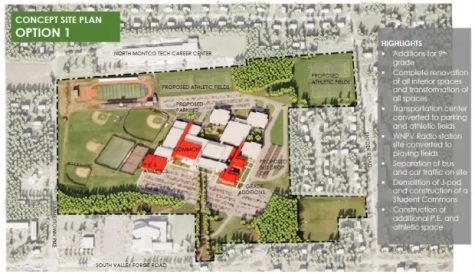
The same questions may soon resurface: how can both sides be appeased? How can population numbers be balanced while also maintaining fiscal responsibility?
“From a building standpoint, there is also the fact that the middle schools have all the modular units there. We’re trying to take a comprehensive approach to any construction project that we do… We’re trying to think district-wide and spend the taxpayer money in the most strategic, comprehensive way… because it’s going to be expensive and we want to make sure it lasts because it’s going to be a long-term project,” Stoll said.
Bauer went more in-depth into finances, detailing how the school is financially prepared to deal with such an undertaking along with how it will affect taxpayers individually.
I do think people will want to renovate this building. We just have to do so responsibly. The market is challenging with interest rates and the cost of borrowing money.
— Dr. Todd Bauer - NPSD Superintendent
“That’s a conversation that this community, this school board, and the administration have to have. I do think people will want to renovate this building. We just have to do so responsibly. The market is challenging with interest rates and the cost of borrowing money. We’re used to, in this district, borrowing money for ten, maybe twenty years; we might have to go further. And then, in time, when interest rates come down and we can refinance our loans… Most people say, ‘Okay, that’s fine. How much is it gonna cost me as the taxpayer? How much is my bill going to go up each month?’ And that’s something that we have to put out there transparently,” Bauer explained.
“We have an AA bond rating, which only a handful of school districts in Pennsylvania have. We are very healthy financially, but we’ve been preparing ourselves for this for years and years, so that’s why our fund balance and our annual budget is award-winning at this point because we’ve been trying to prepare for this renovation. So, it’s all about sharing the information and demonstrating how and what the impact will be on each individual taxpayer,” Bauer continued.
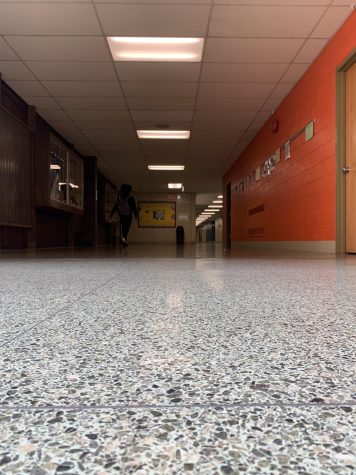
Many who still reside in and around Montgomery Township still remember the events of the ‘90s. One of these people is school board member Mrs. Cathy Wesley, who recalled the changes that were made.
“That was a really dramatic change… The only reason I know is because I bought a house behind the property that was sold to the district and then sold back to a developer who then built homes, so I was all excited that behind me would be a future elementary school and then the second high school… I did go to the meetings back then because you had folks… [that] were really concerned. I guess it’d be like redistricting in a way… That was more dramatic than what this will be. I mean, the footprint stays the same… So it will be less impactful from… a family dynamic in terms of what the morning looks like and who’s going where,” Wesley said.
Wesley also recalled watching the documentary and how everyone’s opinions had come into play, as well as how vital it is to learn from history.
You have to see how politics plays into it. It’s a difficult decision and when you have different points of view, people look at it through their own lens
— Mrs. Cathy Wesley, North Penn School Board Director
“You have to see how politics plays into it. It’s a difficult decision and when you have different points of view, people look at it through their own lens. And then, you realize when the board changes, things can change, and you saw that. So that’s why it’s important that this board stay intact in order to move forward and execute this… That’s what happened with the board back then. You know, the board changed and there you go. And it went back to David Cutler and… the district lost money because of inefficiencies and change in direction. Changing direction further down the road is really impactful financially,” Wesley added.
In light of the 9th-grade center discussions, Gillmer gave insight into more of North Penn’s history as it becomes more clear how history continues a constant loop.
“The first North Penn High School was created in 1955, and that’s where Penndale is now… So, there’s the old section where the auditorium is: that was old Lansdale High School. The left part, from the bridge over, was built onto that building as North Penn High School in 1955. So Lansdale, Hatfield, [and] North Wales combined their high schools to create North Penn High School… North Penn School District was created in ‘66, and already by ‘67 [or] ’68, not 10 years later, we’re already talking about building a new high school. So they spent all this money to build North Penn High School as it is at Penndale, and that was too small because we were growing so much that they needed a bigger high school… You’re going to see the same exact conversations; You just copy and paste, change the date, about ‘We don’t need this. We don’t need another high school. It’s too big. It’s a Taj Mahal. The community can’t afford it. We’re going to bankrupt everybody and there’s not going to be enough kids to be in that building. Why are we building this building?’ The other thing is, ‘why are we building it all the way up in Towamencin where nobody lives,’ because it was like farmland up here… So, fast-forward to the ‘90s, we’re talking about a second high school: ‘It’s too much. we don’t need it. It’s going to cost too much.’ And it’s the same pro second high school, anti-high school [debate],” Gillmer explained.
Later on, in the late ‘60s, the community faced massive growth as well, and they had come up with a solution. North Penn School District owned another property in North Wales. This property is where neighborhood Knapp Farm currently lies, next to the Montgomery Mall. The district had eminent domained it from the Knapp Family, and this second high school was supposedly going to be built and opened in the early to mid-1970s. It would’ve been three times larger than Lansdale High School (Now Penndale Middle School). But, by the mid-’70s, the growth had dropped off. This reduction forced the closing of multiple of their elementary schools, including West Point, J. Henry Specht, Line Street School, and Hancock Elementary Schools.
“It’s just really fascinating to watch the conversation, and when we begin this conversation of renovating this building, ‘Are we going to have a ninth-grade center?’ ‘What is it going to mean?’ The conversations will be similar to 1971, to 1955. They’re going to be similar conversations: Do we need it? Is it what’s best for kids? How much is it going to cost? Pretty standard questions when you’re dealing with any type of construction project that is as massive as a high school,” Gillmer informed.
Major players from the discussions of the ‘90s have heard of the 9th-grade center and renovation discussions.
With these discussions progressing, Mengel expressed her opposition to the center, linking current events with a similarly discussed kindergarten center.
“I hope they don’t do it… I hate to see any one group be singled out. I don’t like the appearance of anything that has exclusivity or an elitist appearance to it. A long time ago, when I was on the board, there was talk of a kindergarten center… That got shot down. Again, the lack of inclusion, that exclusivity, like a private academy appearance. I’m hoping they don’t do the 9th-grade center… I believe that they can go back to the drawing board and work this out. Sharpened pencils, work this out. Make this fit,” Mengel advised.
Baughn, having heard of the potential 9th-grade center, offered his insights into focusing on the student’s health, especially after having lived the same situation in years past.
“I think personalization… would be my biggest concern… We’ve become too dependent upon things other than us. I think that we need to assure that whatever we do and how ever we do it, that if a student needs help, there’s an individual that they can come see, not just a machine. I’m adamant about that. I think that too often, we think that this computer is the solve-all, when in fact sometimes people just need somebody to give them a hug, or to shake your hand or look them in the eye and say ‘it’ll be okay…’ If you’re going build this 9th-grade addition, first thing I would do is find room for psychologists, sociologists, counselors, career people, people who… these young people can talk to when they need help,” Baughn suggested.
If the 9th-grade center goes to referendum, the time will come again when the community and the board must decide: do we let history repeat itself, or will we come together to make a unanimous decision? The K-Pod discussions led to great division and political crossfire, and the students were caught in the center of the fight. While the K-pod renovation proved to be a transformative step towards creating a more open learning environment, there’s the question of if it was worth losing people over.
The 1997 high school renovation provided valuable insights into the current conversation surrounding the 9th-grade center; while the renovation forever changed North Penn, it is still essential to consider the ever-evolving needs of students, advancements in education, and the financial implications of taking on such a project.
The more things change, the more they stay the same.


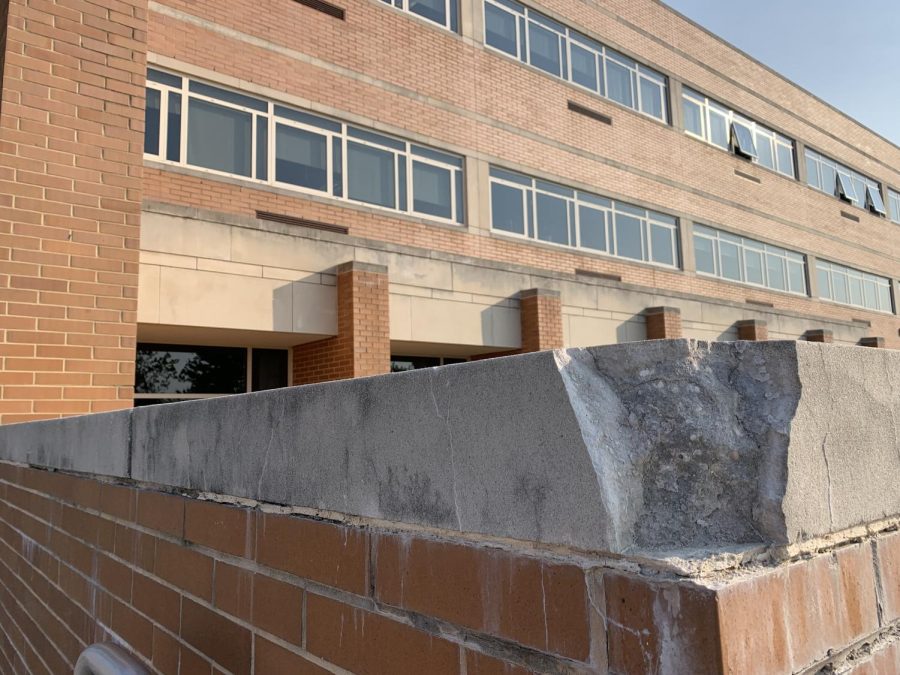










Sadie • Jun 8, 2023 at 3:22 pm
The facade in the picture looks cheap and not structurally sound. Where are the supports and rebarb? Looks like raw poured concrete. You get what you pay for. Search out new contractors.
Charisse Krieger • May 31, 2023 at 9:29 am
Wonderful article! True to the times!
Ella • May 30, 2023 at 8:34 am
This is such a great article!